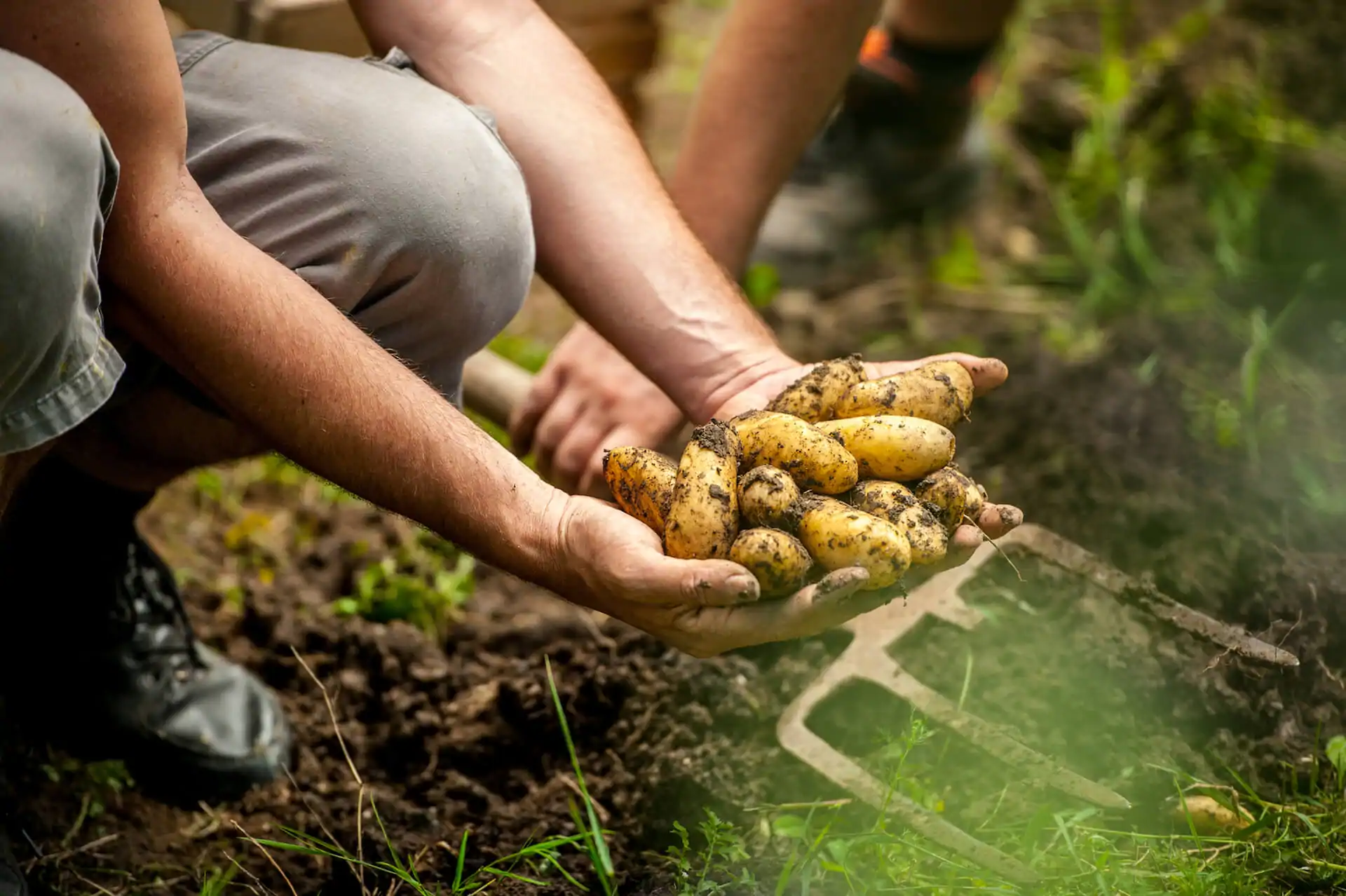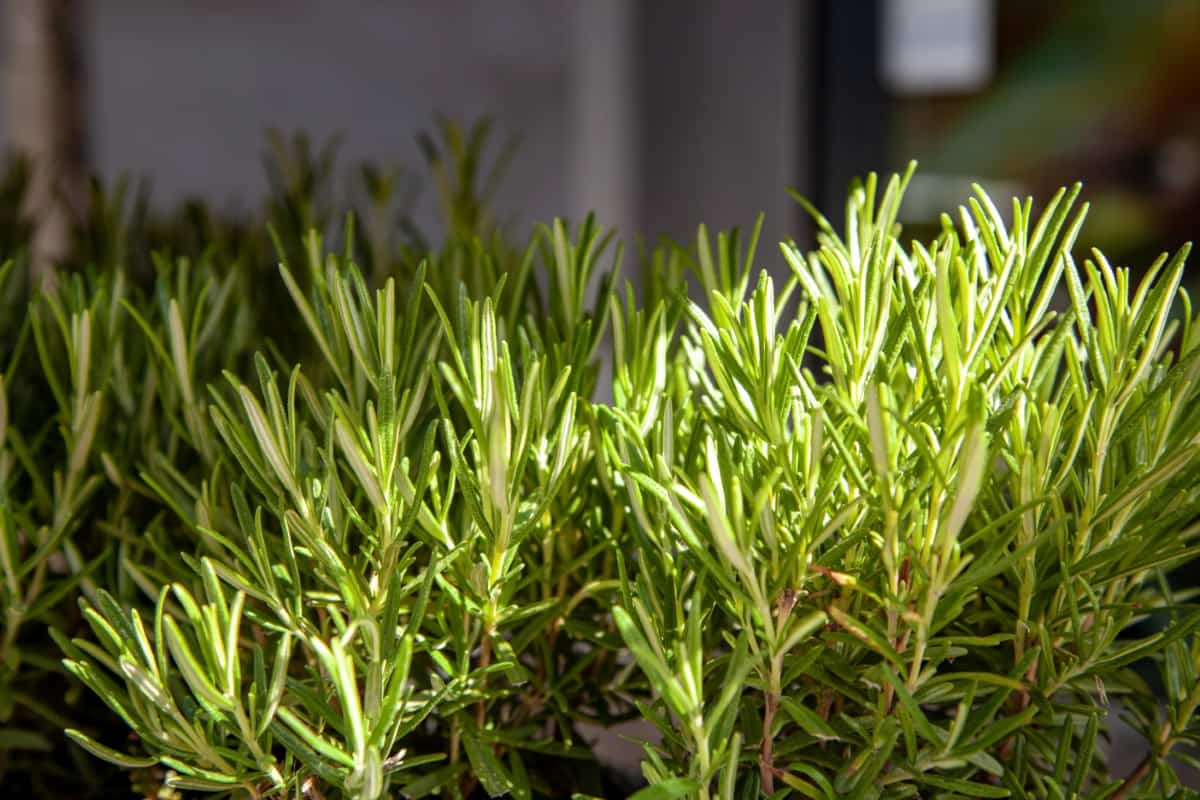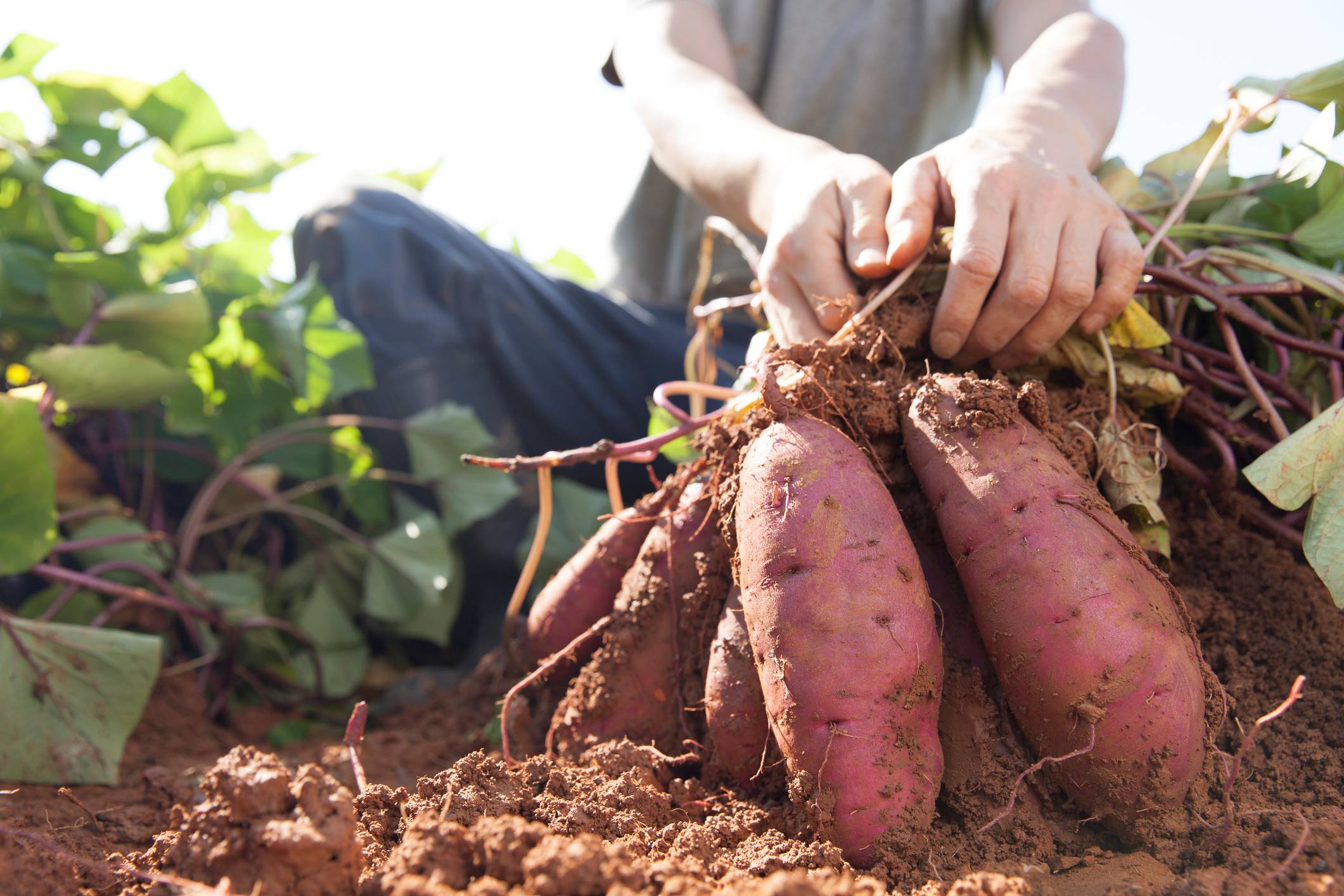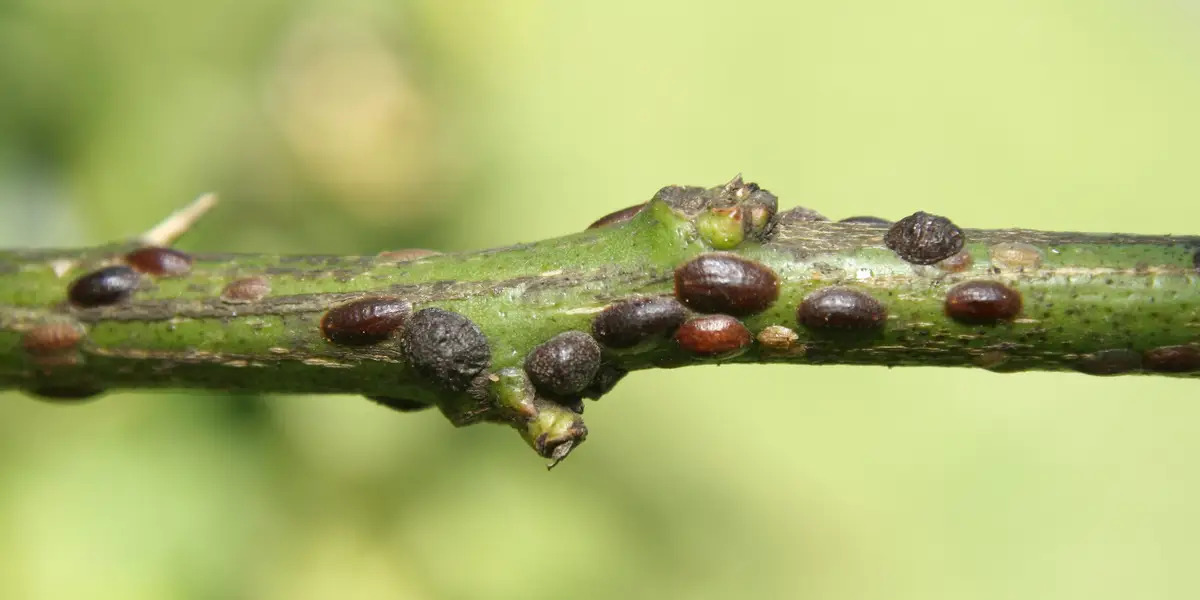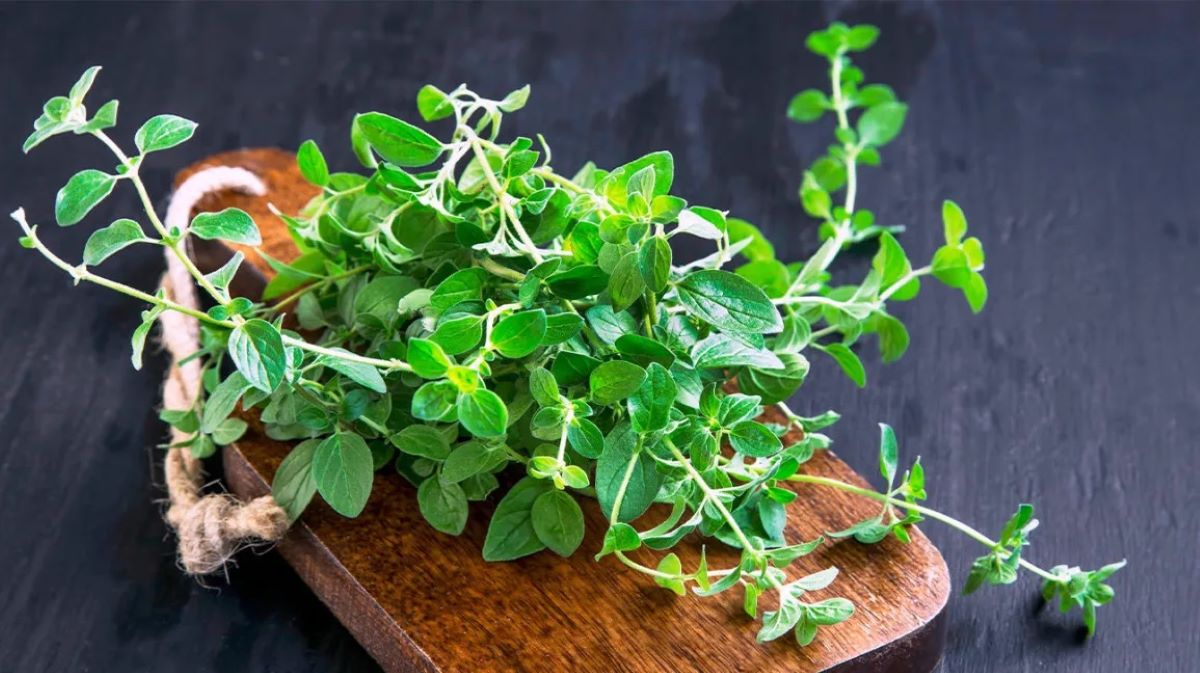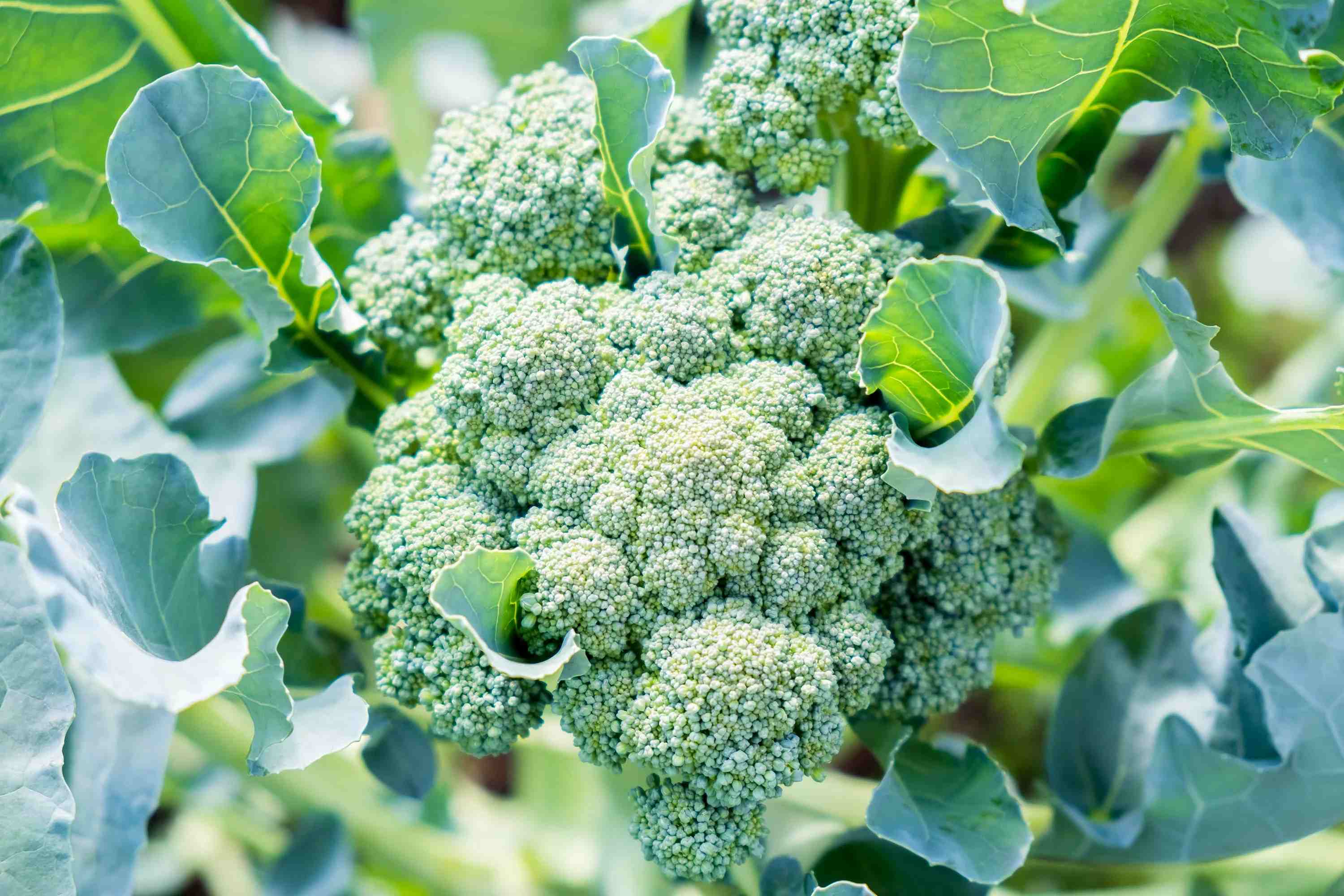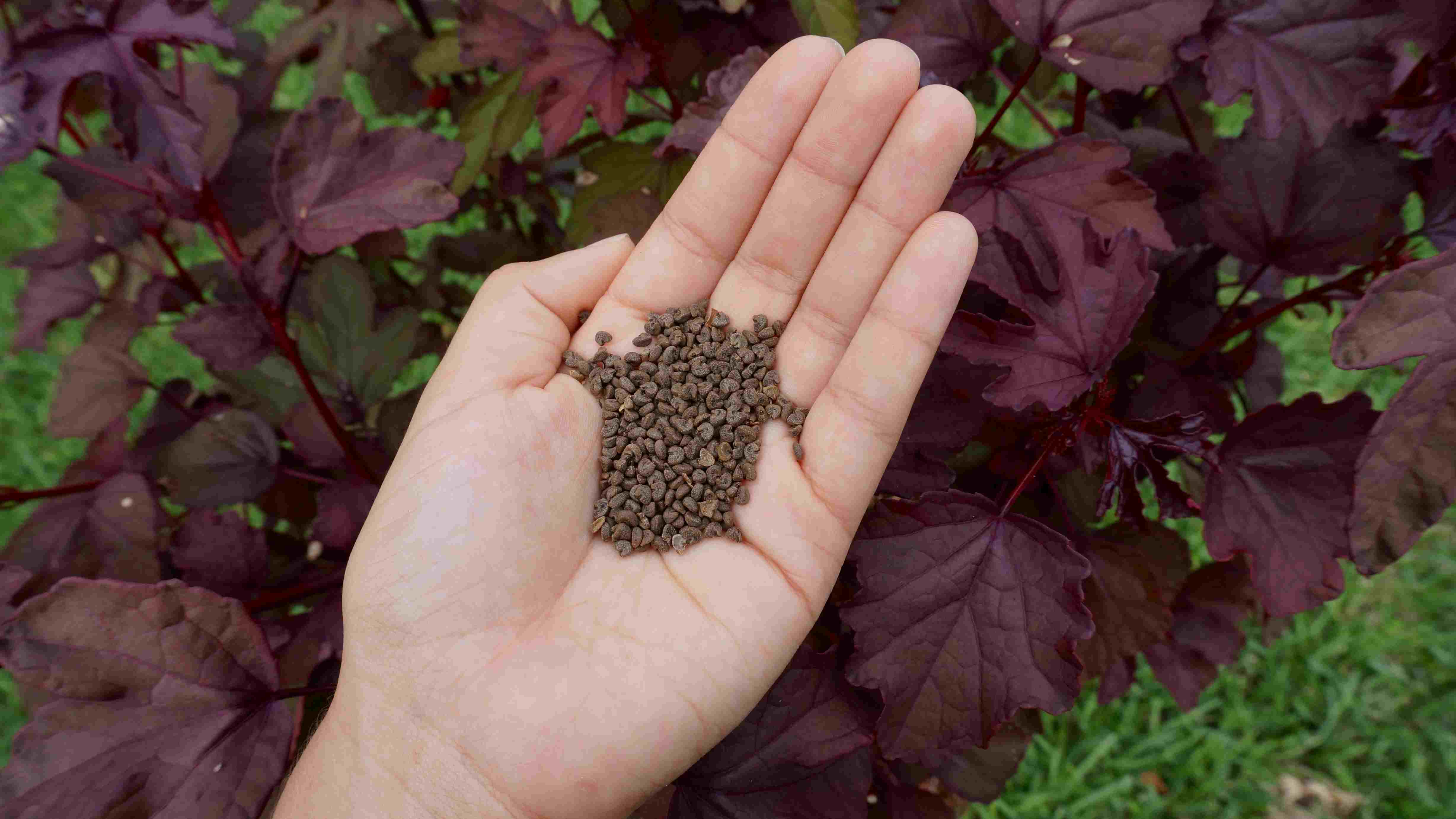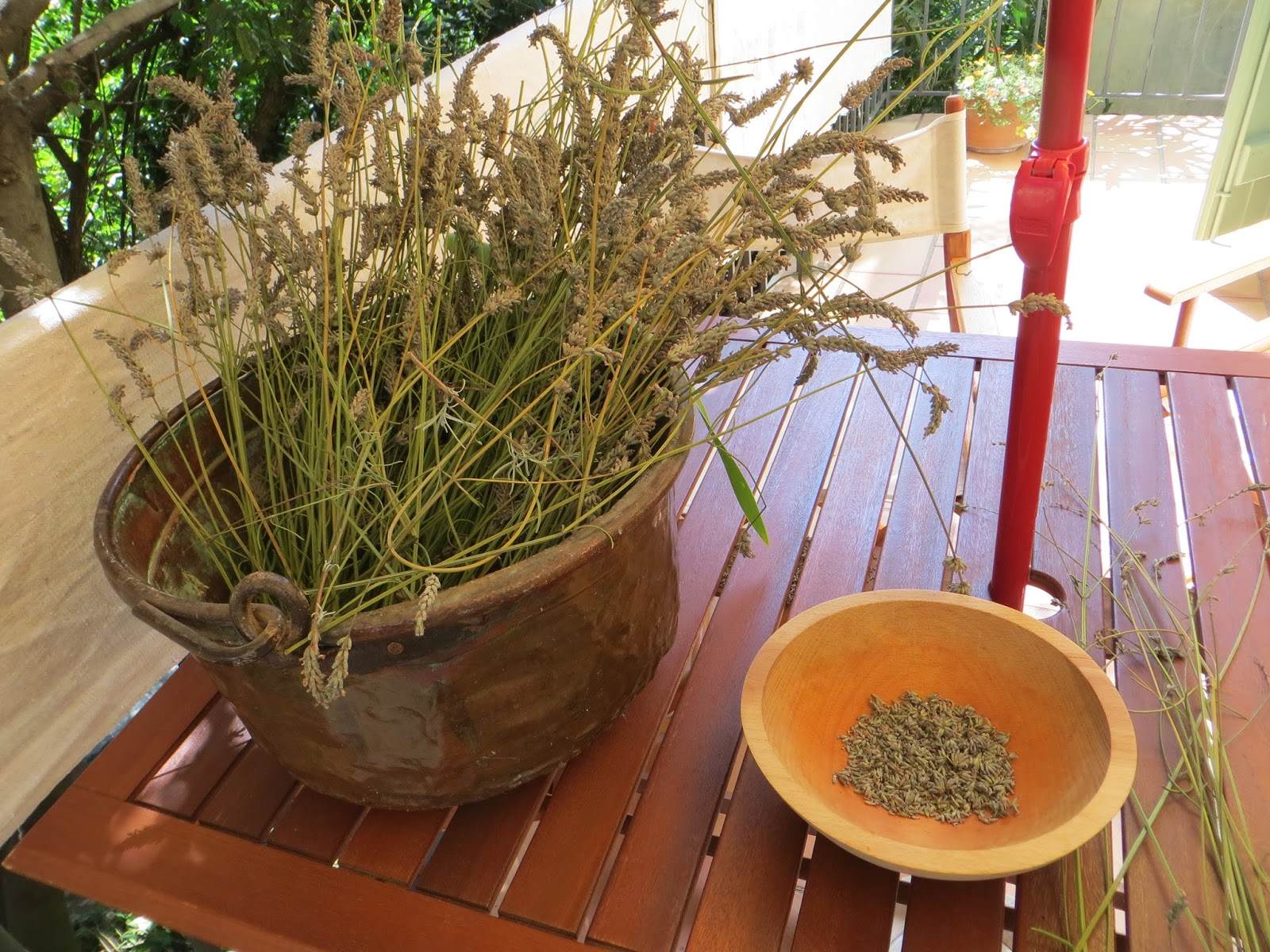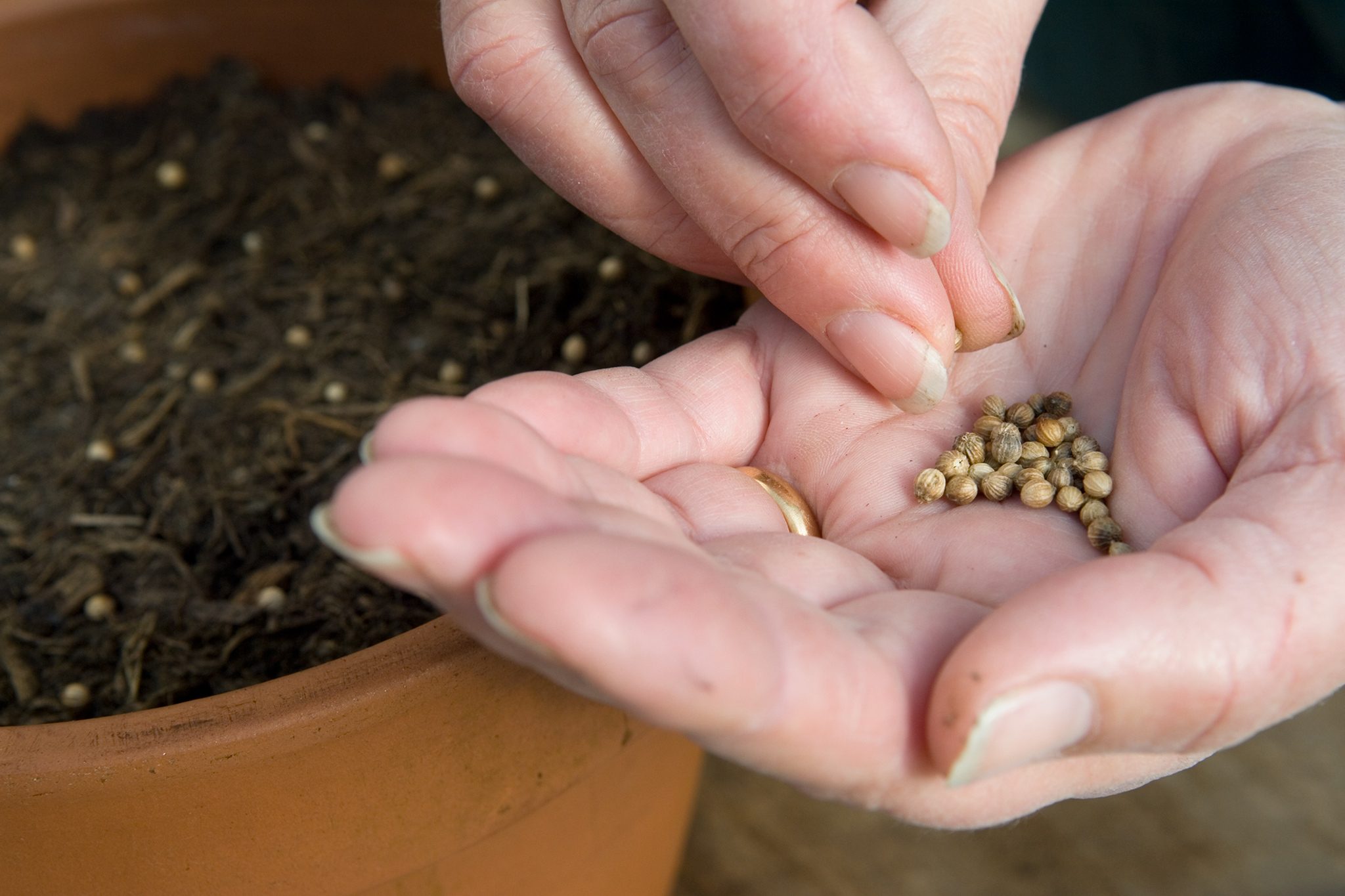Home>Gardening Techniques>Plant Care>How To Harvest Herbs Without Killing The Plant
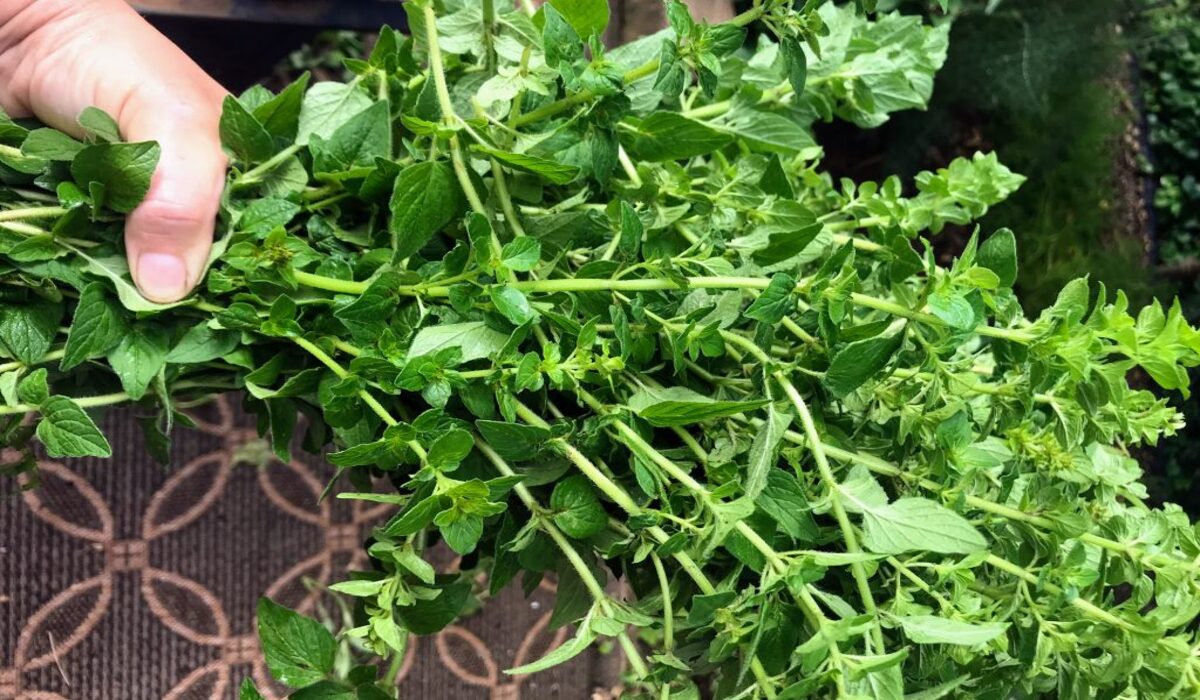

Plant Care
How To Harvest Herbs Without Killing The Plant
Modified: January 22, 2024
Learn the art of plant care and discover how to harvest herbs without harming the plant. Get expert tips and techniques to maintain a healthy and thriving herb garden.
(Many of the links in this article redirect to a specific reviewed product. Your purchase of these products through affiliate links helps to generate commission for Chicagolandgardening.com, at no extra cost. Learn more)
Table of Contents
Introduction
Gardening enthusiasts and plant lovers know the joy of growing their own herbs. Not only do herbs offer a variety of flavors and aromas to enhance our culinary creations, but they also have numerous health benefits and bring a touch of greenery to our homes and gardens. Harvesting herbs is an essential part of the gardening process, but it can be a delicate task. It’s crucial to know the right techniques and timing to ensure the plants continue to grow and thrive.
In this article, we will explore the art of harvesting herbs without harming the plant. We will discuss the importance of selecting the right herbs for harvesting, understanding the ideal time to harvest, and the tools and equipment needed for the process. Additionally, we’ll delve into techniques such as pruning and pinching and offer tips on cleaning and preserving your harvested herbs for future use.
Whether you are a seasoned gardener or just starting your herb garden, this guide will provide invaluable insights to help you enjoy a bountiful herbal harvest without causing damage to the plants. So, let’s dive in and discover the secrets to harvesting herbs successfully!
Selecting the Right Herbs for Harvesting
When it comes to harvesting herbs, the first step is selecting the right herbs to grow in your garden. Not all herbs are created equal, and some are better suited for harvesting than others. Here are a few factors to consider when choosing which herbs to plant:
- Personal preferences: Consider the herbs you personally enjoy using in cooking or for medicinal purposes. Select herbs that will be most beneficial and enjoyable for you and your family.
- Growing conditions: Different herbs have different requirements for sunlight, soil type, and water. Take into account the conditions in your garden and choose herbs that will thrive in those conditions.
- Growing habits: Some herbs, like mint and oregano, have a tendency to spread rapidly and can become invasive. If you have limited space or want to keep your herb garden contained, choose herbs with more compact growth habits.
- Perennial vs. annual: Decide whether you want to grow perennial herbs that will come back year after year or annual herbs that need to be replanted each year. Perennial herbs like rosemary and thyme can provide a longer harvest period.
A diverse selection of herbs in your garden will not only provide you with a variety of flavors but also create a visually appealing and aromatic space. Some popular herbs to consider include basil, parsley, cilantro, sage, and lavender.
Once you have chosen the herbs you want to grow, it’s time to move on to the next step: understanding when and how to harvest them. Timing is crucial to ensure the herbs are at their peak flavor and potency.
Timing the Harvest
Timing is key when it comes to harvesting herbs. Harvesting herbs at the right time ensures that you get the best flavor, aroma, and nutritional value from your plants. Here are a few tips to help you determine the optimal time for harvesting:
- Leafy herbs: Leafy herbs such as basil, parsley, and cilantro are best harvested before they start to flower. The leaves are at their most flavorful and tender before the plant channels its energy into producing flowers.
- Flowering herbs: For herbs like lavender and chamomile, harvesting is best done when the flowers have fully bloomed, but before they start to wilt or fade. This is when the essential oils are at their peak, providing the most potent fragrance.
- Perennial herbs: Perennial herbs like rosemary, thyme, and sage can be harvested throughout the growing season. It’s best to trim only a portion of the plant at a time, allowing it to continue producing new growth.
- Morning harvest: Harvesting herbs in the morning, after the dew has dried, is ideal. The leaves are crisp and contain higher concentrations of essential oils, maximizing the flavors and aromas.
While these general guidelines can help you determine when to harvest, it’s important to pay attention to the specific instructions for each herb variety. Some herbs may have unique harvesting requirements due to variations in growth habits and flavor profiles.
By timing your harvest correctly, you ensure that you are getting the most out of your herbs in terms of flavor and nutritional value. The next step in the process is to gather the right tools and equipment for a successful harvest.
Tools and Equipment Needed for Harvesting
Having the right tools and equipment is essential for a smooth and efficient herb harvest. Here are some commonly used tools that will help you harvest your herbs effectively:
- Garden shears or pruners: These sharp and sturdy tools are perfect for cutting and trimming herbs. Look for ones with a comfortable grip and a bypass or anvil design for clean cuts.
- Herb scissors: Herb scissors have multiple blades that allow you to quickly and easily cut herbs into small pieces. They are especially useful for leafy herbs like parsley and chives.
- Sharp knife: A sharp knife can be used to harvest herbs with thicker stems or to divide clumps of herbs for transplanting. Choose a knife with a high-quality stainless steel blade.
- Gloves: Wearing gardening gloves protects your hands from prickly herbs like thyme or rosemary and prevents contact with any potential irritants.
- Basket or tray: Use a basket or tray to gather your harvested herbs. Make sure it’s spacious enough, sturdy, and well-ventilated to prevent bruising or crushing of delicate leaves.
- Labels or markers: Have labels or markers on hand to identify the different herbs you have harvested. This will help you stay organized during the drying and storing process.
Remember to clean and sanitize your tools before each use to prevent the spread of diseases or pests among your herb plants. This can be done by wiping them with a cloth soaked in rubbing alcohol or a dilution of bleach and water.
Now that you are equipped with the right tools, it’s time to get hands-on with the techniques for harvesting your herbs.
Techniques for Harvesting Herbs
When it comes to harvesting herbs, using the right techniques ensures that you don’t cause harm to the plant and allow for continued growth and productivity. Here are some essential techniques to follow:
- Individual leaf harvest: For leafy herbs like basil and parsley, you can harvest individual leaves as needed. Pinch or cut off the outer leaves, starting from the bottom of the plant, and work your way up. This prevents the plant from becoming top-heavy and encourages bushier growth.
- Whole stem harvest: Some herbs, such as rosemary and thyme, have woody stems and can handle a more significant harvest. Use garden shears or pruners to cut the stems about an inch above the base of the plant. This method stimulates new growth from the base.
- Pinching: Pinching is a technique used on herbs with delicate stems, such as basil and mint. Simply pinch off the top few inches of the stem, just above a set of leaves. This encourages the plant to branch out and promotes a denser and bushier growth habit.
- Harvesting flowers: For flowering herbs like chamomile and lavender, snip off the entire stem just below the flower head when the flowers have fully bloomed. Avoid cutting too many flower stems at once, as it can weaken the plant.
When using sharp tools, make clean cuts to minimize damage to the herb plant. Cut at a 45-degree angle to prevent water from pooling on the surface and reduce the risk of disease or rot. Take care not to tug or pull on the plants as it can cause damage to the root system.
Keep in mind that while it’s tempting to harvest a large amount of herbs at once, it’s better to practice regular and moderate harvesting. This allows the plant to continue growing and producing throughout the season. Now that you have successfully harvested your herbs, it’s time to clean and preserve them for future use.
Pruning vs. Pinching: Which Method to Use?
When it comes to shaping and maintaining the growth of your herb plants, two common techniques are pruning and pinching. Both methods have their advantages and are suitable for different types of herbs and growth habits. Let’s explore which method to use depending on your specific needs:
Pruning: Pruning involves cutting back a portion of the plant to control its size, shape, and encourage healthy growth. This technique is ideal for herbs with woody stems like rosemary, thyme, and sage. Here’s how to prune your herbs:
- Identify any dead, damaged, or diseased branches and remove them completely to maintain the overall health of the plant.
- Prune the herb by cutting back up to one-third of its overall growth. Make the cuts just above a set of leaves or a node to encourage new growth.
- Regular pruning can help prevent your herb plant from becoming too woody, promote bushier growth, and increase its longevity.
Pinching: Pinching is a technique used on herbs with delicate stems, such as basil and mint, to encourage branching and a fuller, bushier habit. Here’s how to pinch your herbs:
- When the herb plant reaches a height of 4-6 inches, pinch off the top few inches of the stem just above a set of leaves.
- This removes the apical bud, redirecting growth to the lateral buds and causing the herb to branch out and become denser.
- Continue pinching every few weeks or as needed to keep the plant compact and encourage a continuous harvest of fresh leaves.
Both pruning and pinching can be done throughout the growing season, but it’s important to be mindful of not over-pruning or pinching too much at once. Striking the right balance will promote healthy growth while allowing the plant to continue producing leaves or flowers.
By understanding the differences between pruning and pinching and knowing which method to use, you can ensure that your herb plants maintain an attractive shape and produce abundant foliage or flowers. Now that you have harvested your herbs, it’s time to move on to the next step – cleaning and preserving them for future use.
Cleaning and Preserving Harvested Herbs
After a successful herb harvest, it’s important to properly clean and preserve your harvest to ensure its freshness and longevity. Cleaning your herbs will remove any dirt, insects, or debris, while preserving them will help maintain their flavor and aroma for future use. Here are some steps to follow:
Cleaning:
- Gently shake off any excess dirt or debris from the harvested herbs.
- Fill a bowl or basin with cold water and submerge the herbs.
- Gently swish the herbs in the water, allowing any dirt, insects, or dust to dislodge.
- Remove the herbs from the water and gently pat them dry with a clean towel or paper towel.
- Inspect the herbs for any remaining impurities and repeat the cleaning process if necessary.
Preserving:
- One of the most popular methods for preserving herbs is air drying. Gather bunches of herbs and tie them together with string or a rubber band. Hang them upside down in a well-ventilated area away from direct sunlight. The herbs will naturally dry within a few weeks.
- Alternatively, you can also use a food dehydrator or set your oven to a low temperature and spread the herbs on a baking sheet. Dry them for several hours until they are crisp and crumble easily.
- For freezing herbs, you can either chop them finely or leave them whole. Place the herbs in ice cube trays and fill with water or olive oil. Once frozen, transfer the herb cubes into freezer bags or containers for long-term storage.
- Another method is to infuse herbs in oil or vinegar. Simply place the herbs in a jar, cover them with oil or vinegar, and let them sit for a few weeks. Strain out the herbs and store the infused oil or vinegar in a cool, dark place.
- Label your preserved herbs with the name and date to keep track of their freshness.
By cleaning and preserving your harvested herbs, you can enjoy their flavors and aromas well beyond the harvest season. Remember to store them in airtight containers in a cool, dry place away from direct sunlight or heat sources.
Now that you have successfully cleaned and preserved your harvested herbs, you can enjoy them in your culinary creations, herbal teas, or for various medicinal purposes. The next step is to discover the best practices for storing your preserved herbs.
Storing Herbs for Future Use
Proper storage is crucial to maintain the flavor, aroma, and potency of your preserved herbs. Here are some tips for storing your herbs to ensure their freshness and quality for future use:
- Dried herbs: If you have air-dried or dehydrated your herbs, store them in airtight containers such as glass jars or resealable bags. Make sure to label them with the name of the herb and the date of preservation. Store your dried herbs in a cool, dark place away from direct sunlight or heat sources. This will help prevent flavor loss and extend their shelf life.
- Frozen herbs: For herbs that have been frozen, transfer the herb cubes or portions into freezer bags or containers. Label them with the herb name and date before storing them in the freezer. Keep in mind that freezing can slightly alter the texture of herbs, but they will retain their flavor and nutritional value for several months.
- Infused oils and vinegars: Store your homemade herb-infused oils and vinegars in dark-colored glass bottles or jars. The dark glass will help protect them from light, preserving their flavors. Keep them in a cool, dry place, and be sure to use them within a few months for the best quality.
- Fresh herbs: If you have freshly harvested herbs that you’re not ready to use immediately, you can store them in the refrigerator to extend their freshness. Wrap them loosely in a damp paper towel and place them in a plastic bag. This will help maintain their moisture and prevent wilting. Fresh herbs are best used within a few days.
When using your preserved herbs, remember to adjust the quantity based on their potency. Dried herbs are more concentrated, so you’ll need less compared to fresh herbs. It’s a good idea to taste and adjust the seasoning as you cook to ensure the desired flavor.
By following these storage tips, you can extend the shelf life of your herbs and have them readily available for use in your culinary endeavors or for herbal remedies. Enjoy the flavors and benefits of your homegrown herbs all year round!
Conclusion
Harvesting herbs is a gratifying and essential part of maintaining a thriving herb garden. By following the right techniques, timing, and using the proper tools, you can harvest your herbs without causing harm to the plants and ensure a continued abundance of fresh flavors and aromas.
In this article, we discussed the importance of selecting the right herbs for harvesting based on personal preferences, growing conditions, and habits. We also explored the significance of timing the harvest to maximize the flavor and potency of the herbs.
We then delved into the tools and equipment needed for a successful harvest, including garden shears or pruners, herb scissors, gloves, and labeling materials. Having the right tools can make the harvesting process efficient and minimize damage to the plants.
Additionally, we explored various techniques for harvesting herbs, such as individual leaf harvest, whole stem harvest, pinching, and harvesting flowers. Each method is suited for different types of herbs and growth habits, enabling you to shape and maintain your plants accordingly.
Furthermore, we touched on the importance of cleaning and preserving your harvested herbs for future use. Proper cleaning methods remove impurities, while various preservation techniques like air drying, freezing, or infusing in oil or vinegar help maintain flavor and quality.
Lastly, we discussed the best practices for storing your preserved herbs, whether dried, frozen, or infused. The proper storage ensures that your herbs retain their freshness, flavor, and potency for extended periods of time.
With the knowledge and techniques shared in this article, you can confidently harvest and preserve your herbs, adding a burst of flavor and aroma to your culinary creations or enjoying the therapeutic benefits of herbal remedies throughout the year.
So, get out there, embrace the art of herb harvesting, and elevate your gardening and culinary experiences!
